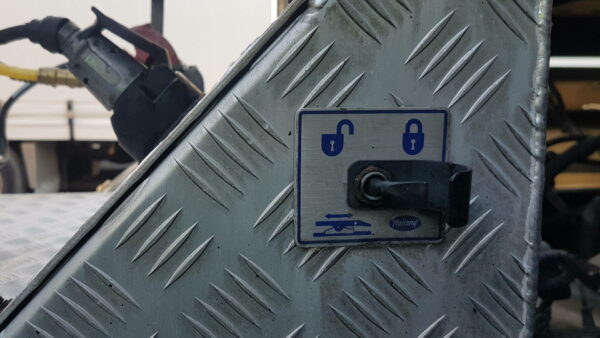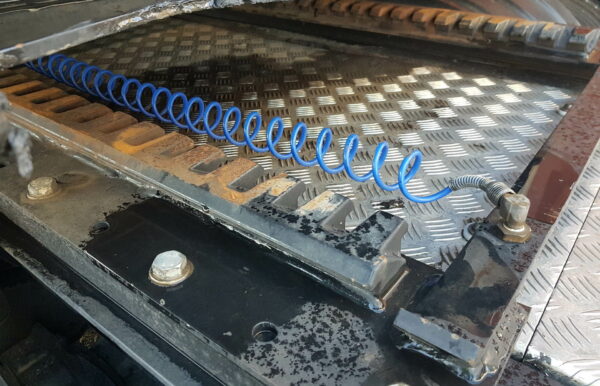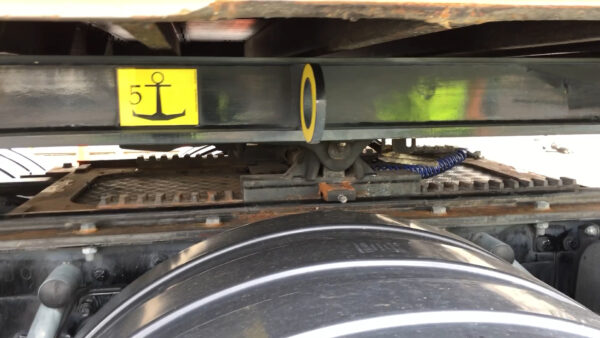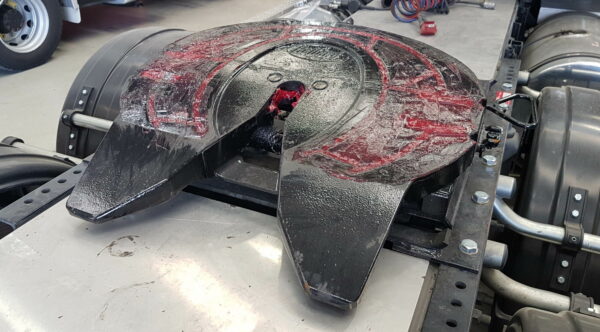You’ve hooked up your trailer and you’ve headed to a weighbridge and the bad news is that your front (steering) axle is overloaded. An overloaded axle is both illegal and dangerous. It can overheat your tyres, make your braking performance much worse, affect your steering and even cause a jackknife if it’s bad enough.
Whoever loaded the trailer has put too much weight at the front, but you don’t have any ability to change that, so what can you do?
If you have a sliding fifth wheel, you can move the load backwards so that more weight is over the tractor unit’s drive axles.

It’s common for drivers to move the fifth wheel, not only for weight distribution, but also to get the best aerodynamic performance from the vehicle. A smaller distance between the cab and the trailer makes for better fuel economy, but it’s not always possible to do this if the front of the trailer is heavy because too much weight will be over the steering axles.
Add to this the complication of full vs empty fuel tanks (diesel weighs around 8 pounds per gallon) and you’ll see it’s difficult to calculate an exact weight distribution.
If your tractor unit has a moveable fifth wheel, there will be a switch behind the cab to unlock it.

When the fifth wheel is unlocked, it can slide on this notched rail. Each notch represents a certain percentage of weight distribution forwards and backwards – you’d need to check the manufacturer’s documentation to know just how much.


How to move the sliding fifth wheel
- Ensure the trailer brakes are applied and that the semitrailer is securely connected
- The trailer must be in line with the tractor unit – you can cause damage if it isn’t
- Unlock the fifth wheel using the switch
- Move the prime mover forwards to change the weight balance more onto the drive wheels, and vice versa
- Apply the parking brake on the tractor unit
- Get out and lock the fifth wheel
- Check it again on the weighbridge
Once you have dropped off the trailer, return your fifth wheel to its regular position.
What to check
- Before you try to move the trailer, check both slider plunger pins are out (there’s one either side)
- Once you’ve moved the trailer, ensure that both slide plunger pins have moved back in. If they won’t go back in, move the tractor unit forwards or backwards slightly to take any pressure off the connection
- Check that the unit is serviced regularly and has enough grease
- Do a tug test before you drive away – if the pins are unlocked, the first time you brake, the trailer will slide forward and break the coupling.
Can you move your fifth wheel?
Not all fifth wheels can be moved while coupled to a trailer. This fifth wheel can be moved, but only by undoing the bolts and sliding it forwards or backwards.

